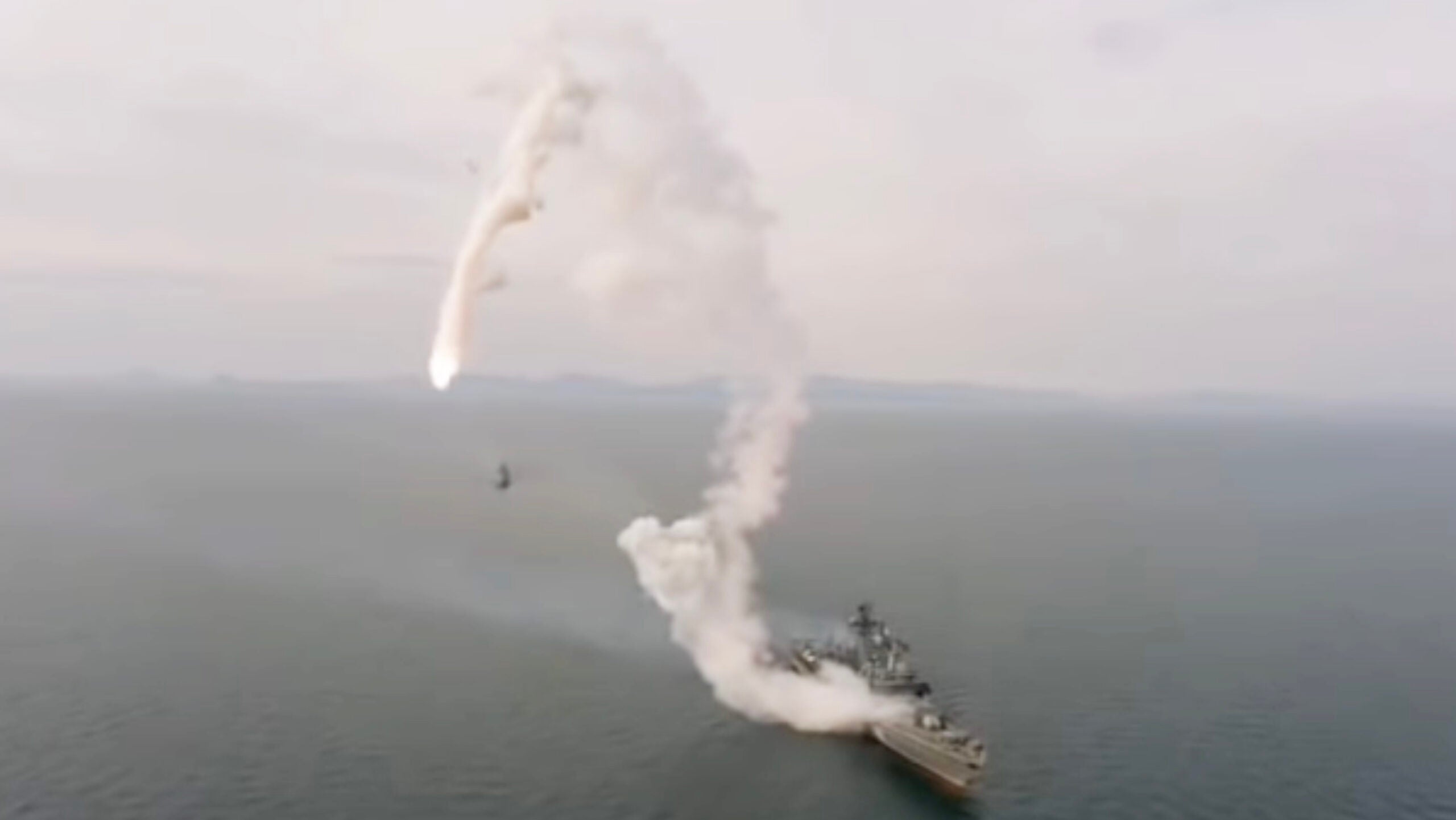A video has emerged showing a test launch of a Kalibr cruise missile from a Russian Navy Project 1155 Udaloy class destroyer going spectacularly wrong. The footage shows the weapon, which has been newly introduced to the warship, the Marshal Shaposhnikov, cartwheeling uncontrollably soon after launch. It then crashes into the sea, where it continues to burn, not far from the ship, leaving a boiling whirlpool behind it.
While it bears the hallmarks of an official video, it was apparently leaked on the Russian Telegram social media network and was later posted to YouTube. Exactly when it was filmed is unclear, but Marshal Shaposhnikov recently rejoined the Russian Navy’s Pacific Fleet after receiving upgrades as part of a larger overhaul. Having returned to sea for post-refit trials last July, it conducted live-fire Kalibr tests from its newly installed vertical launch system earlier this month. Footage of a successful launch appeared on the Russian Ministry of Defense’s official news channel, Zvezda, on April 27. Both clips show similarities that suggest they could be from the same event.

According to Zvezda, the maneuvers during which the missiles were apparently launched involved two groups of Pacific Fleet ships underway in the Sea of Japan, in early April. The live-firing drills, which included the use of both missiles and guns, were described as “a control check during the winter training period.”
Originally completed in 1984 as a Project 1155 Udaloy class anti-submarine warfare destroyer, Marshal Shaposhnikov underwent a four-year modernization in Vladivostok that, in addition to the vertical launch system, added new guns and Uran subsonic anti-ship missiles, emerging as a true multi-role warship. Reportedly, more than 20 percent of the superstructure was also dismantled and rebuilt. Other new equipment includes communication systems, elements of the powerplant, and more powerful sonar.

The missile malfunction involves one of the Kalibr cruise missiles that were added to the ship as part of its refit. These are deployed from the 3S14 vertical launch system that has 16 cells for Kalibr family missiles, and which can also accommodate the Oniks supersonic anti-ship cruise missile and potentially the hypersonic Tsirkon cruise missile.
According to available accounts, the missile variant in question is a 3M14T Kalibr-NK, examples of which have been used in the past by the Russian Navy to attack land targets during the civil war in Syria.
Official video showing Kalibr cruise missiles launched from Russian warships in the Mediterranean against targets in Syria in 2017:

The 3M14T, which carries the Western designation SS-N-30A, is a subsonic land-attack cruise missile, or LACM, with an estimated range of around 930 to 1,550 miles. It is understood to carry 990 pounds of conventional explosive or, reportedly, an alternative nuclear warhead.
The weapon was first used in combat in October 2015, as part of large-scale Russian strikes against anti-Assad regime targets in Syria. On that occasion, the missiles were launched from warships in the Caspian Sea, around 1,100 miles distant, in what some officials saw as a piece of deliberate messaging to the United States and its allies.
While misfires of this type, as well as other mishaps, are not unheard of for missiles of all types, and Russia is hardly alone in experiencing them, the incident goes to show the importance of thoroughly testing weapons in this way. This is especially true when they have been newly installed, as is the case with this warship. We should also be thankful that, apparently, no one came to harm in what could have been a much more serious incident.
Contact the author: thomas@thedrive.com
